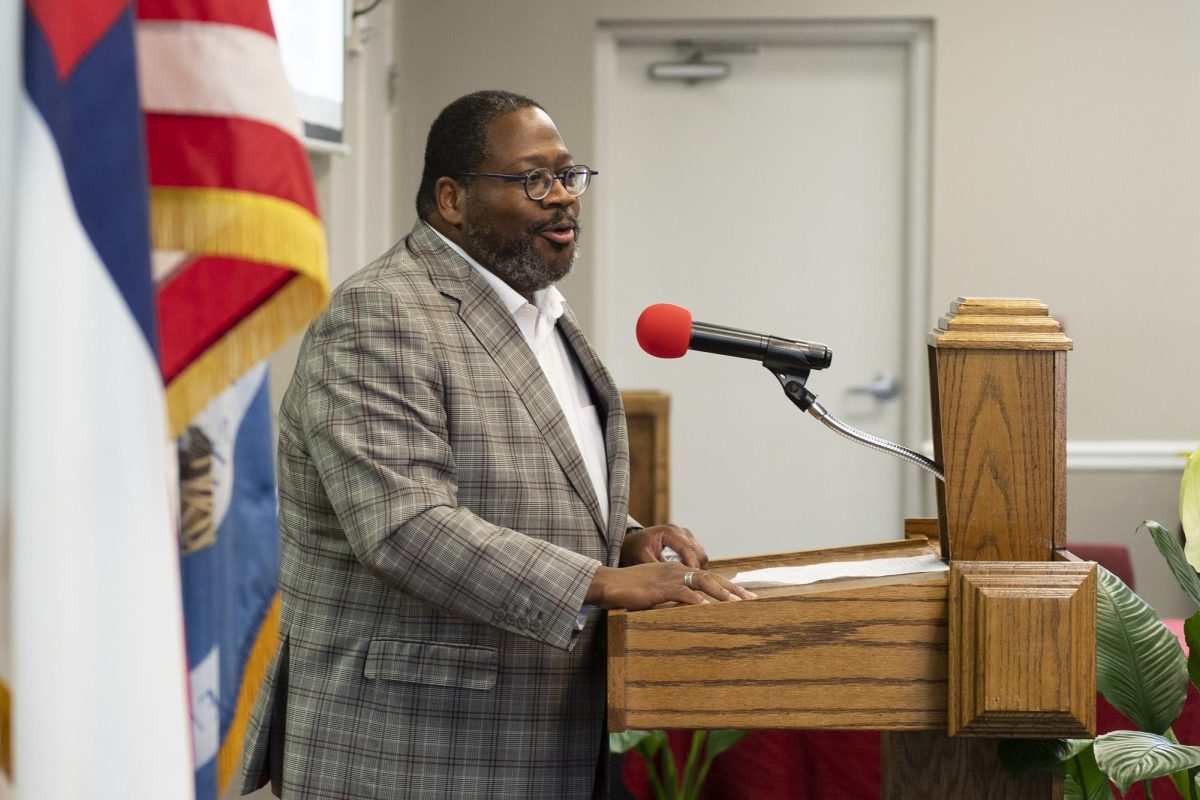Courtney Kotler’s sophomore year is not turning out exactly the way she hoped. If the transition from the freedom of dorm life to the restrictions of living under mom and dad’s roof isn’t enough, she has to manage the twenty-minute commute from her River Ridge home to Loyola every day.
Kotler, general studies sophomore, was aware that she was on a waiting list for a spot in the residence halls, but was unaware of her position on the list and of the actual severity of the situation. After three weeks of constantly calling the office of Residential
Life, she finally got a response. “Finally, he called me back and said ‘I’m so sorry, but there’s no more room. Everything’s over-booked. But there are these apartments at UNO.’ I was pretty upset. Tears were coming down
pretty quickly,” she said.
Kotler is one of approximately
80 students who requested on- campus housing and instead were given the option to live at Privateer Place Student Village on the University of New Orleans’ campus or to make arrangements elsewhere. Unfortunately, neither was really an option for her.
“My parents said I either have to live in Loyola’s dorms or at home,” she said.
Privateer Place Student Village is owned and operated by Campus Living Villages, a corporation that builds campus housing and partners with universities. Privateer Place and UNO have a public- private partnership, meaning that UNO uses the apartments as part of their housing portfolio but does not own or operate the complex. The gated community has a laundry room, a basketball court, a beach volleyball court and a pool. Loyola students will stay in four- person apartments with individual bedrooms and a full kitchen.
Students will be given the option of having a Loyola meal plan, and can make arrangements with UNO for a meal plan there as well.
Robert Reed, assistant-vice president of student affairs, said that neither party is making any additional profit. Students will pay the flat rate for rent at Privateer Place, which is less expensive than a single room in a Carrolton apartment, and Res Life is “just trying to break even,” he said.
According to Google Maps, the drive from Privateer Place to Loyola would be 21 minutes (28 with traffic). To help students commute, Loyola has established a shuttle specifically for the students living at Privateer Place. The shuttles, which are operated by Nicoll’s Limousine and Shuttle Service will make four round trips Monday-Friday and two round trips on the weekend.
The main cause for the situation is that Cabra Hall is undergoing extensive renovation. Eventually it will hold 8-person apartments complete with kitchens. Reed considers it a “major project” that will be completed for the Fall 2013 semester.
According to Craig Beebe, director of Residential Life, plans for the Cabra renovation have been in the works for
a long time. The search for additional housing
options began in April.
“I’m not sure it would have been fruitful to search sooner without knowing exactly how many students we’d be providing for,” Beebe said. “We knew that there would be a lot of students at Loyola this year. We had a plan to manage a lot of that with the sophomore exemption process. Then there was a pleasant surprise in the large number of out-of-state enrollments and we have an obligation to house them.”
Reed explained that every option was explored, even hotels around the campus area. Initially, even Privateer Place had no availability. UNO’s move-in day is a week before Loyola’s, so until then there was no way to be certain whether there were open spots.
“In June, students were notified that campus housing was full and we did not anticipate any bed spaces opening for upperclassmen students,” said Amy Boyle, associate director of residential life.
“The notification encouraged students to seek alternative options off-campus. When we heard back from Privateer Place, our office began contacting all students with a submitted housing contract to determine if they were still in need of housing or if they had moved forward with off-campus options,” Boyle said.
Many of the students given the option to live at Privateer Place were granted sophomore exemption and then later requested on-campus housing again.
Others were returning upperclassmen and transfer students. Of the 80, about 37 will live at Privateer Place.
The other half have made their own arrangements, some only
making short-term lease agreements or staying on friends’ couches as they remain on a waiting list for on-campus housing. Even still, there is another group of students affected by this change.
“If you were on campus for move-in day, you may have noticed a truckload of new furniture outside of Carrolton. That was for temporary housing for first year and exchange students. They will be in temporary dorm living situations until permanent places open
up on campus,” Beebe said.
Reed, who’s worked at Loyola for 31
years, said that this has happened on several occasions. In the past, Loyola has housed students at St. Mary’s Dominican and Tulane University.
“There are always challenges. The main challenge will be to make sure that those students are constantly connected to on- campus life. Even with students living at Tulane, which is right across the street, that was a challenge,” Reed said.
Kotler agrees.
“As much as everyone pays to go to Loyola, it sucks to not have that full-college experience,” she said.
Still, Reed believes that the efforts of Res Life were in the best interest of the students.
“The university went out and found a very nice, comfortable place so that students could pursue their academic career. If we had not done this, basically they
would be on their own,” he said.
For Courtney Kotler, there’s only one silver lining to this cloud.
“I guess my grades might improve, since I’ll have less distractions
and less freedom,” she said.
Jennie Gutierrez can be reached at [email protected]







